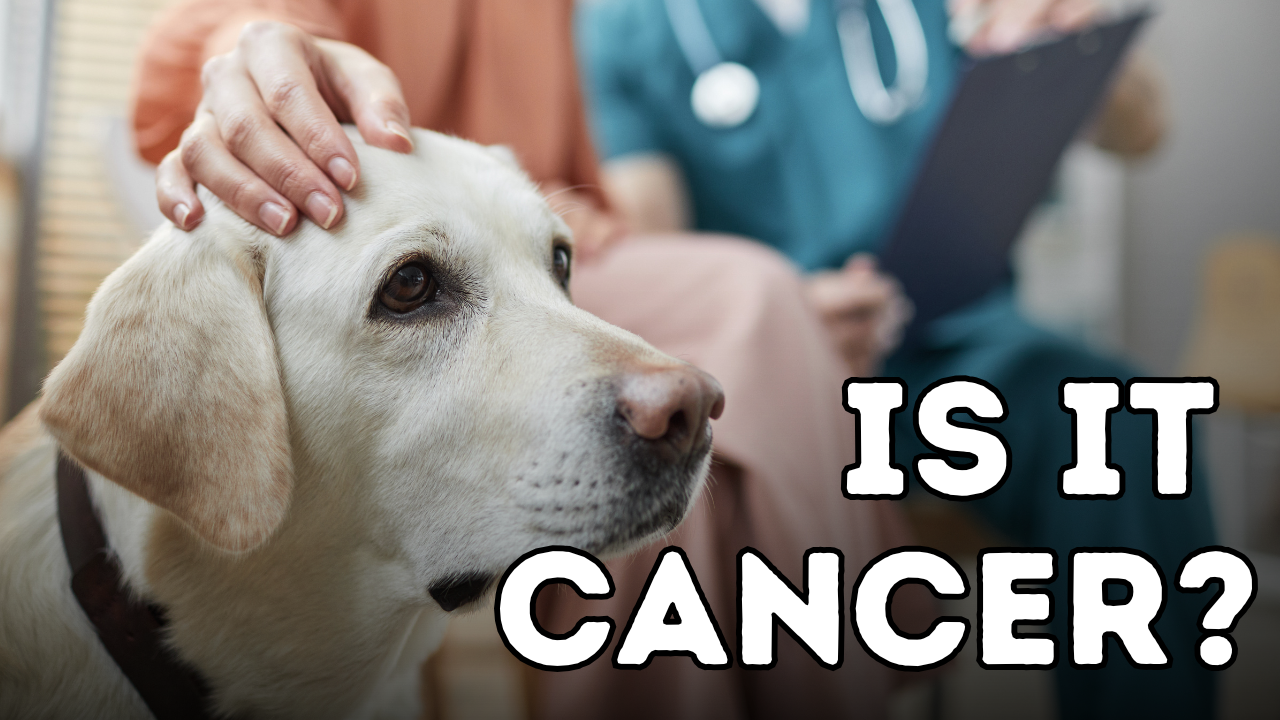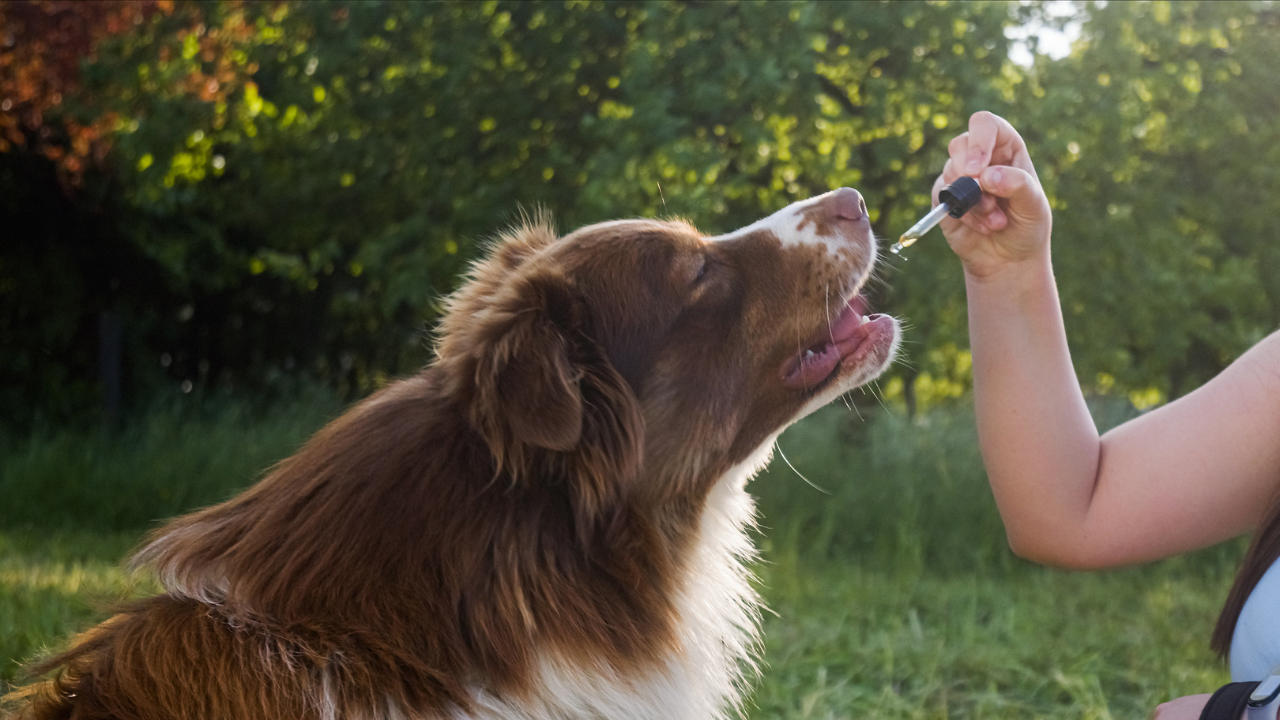Early Signs of Cancer in Pets with Natural and Holistic Treatments

Understanding Mammary Cancer in Pets and Alternative Treatments
As a veterinarian, I’ve seen many animals diagnosed with various types of cancer, including mammary cancer, also known as breast cancer. Thankfully, in most cases, we can perform surgery to remove the cancerous masses, providing significant relief and improvement in the pet’s health.
Mammary Cancer in Cats and Dogs
Mammary cancer is relatively uncommon in cats, but it’s important to keep an eye on your pet’s health. In dogs, about 50% of these tumors are benign, meaning they are not cancerous. However, if the cancer is malignant, it’s crucial to explore alternative treatment options.
The Role of Cannabinoids in Cancer Treatment
Cannabinoids have been extensively studied for their potential to combat various types of cancers, including hormonal cancers like mammary cancer. Research has shown that cannabinoids, including CBD, CBC, and CBG, may have beneficial effects in managing cancer in pets.

Dr. Jones’ ULTIMATE Cannabinoid Blend for Dogs and Cats
To support the health of our furry companions, we now offer a multi-cannabinoid blend specifically formulated for dogs and cats. Dr. Jones’ ULTIMATE Cannabinoid Blend includes a combination of CBD and other beneficial cannabinoids, which could be an effective option to help manage cancer-related symptoms and support overall well-being.
Mammary Tumors in Dogs and Cats: A Comprehensive Guide
As a veterinarian, I see many pets with various health issues, and one common concern I encounter is mammary (or breast) tumors in dogs and cats. These tumors are more common in female dogs but are relatively rare in male dogs and cats. While surgical removal is typically recommended for most mammary tumors, chemotherapy may be needed in some cases after surgery. The prognosis generally improves after surgical resection in female dogs, but it is often worse for certain types of tumors in dogs and all mammary tumors in cats. In this article, I’ll walk you through the details of mammary tumors, including their causes, symptoms, treatment options, and alternative therapies you may want to consider.
Who is Affected?
Certain breeds of dogs and cats are more prone to mammary tumors. In dogs, breeds like poodles, dachshunds, and spaniels are most affected, while in cats, Siamese and other Oriental breeds, as well as domestic short-haired cats, tend to be more susceptible. Interestingly, obesity at a young age is a known risk factor for mammary tumors in dogs.
The Importance of Spaying
Mammary tumors are more prevalent in female dogs that are either unspayed or were spayed after the age of 2. For example, the risk of developing a mammary tumor in female dogs is only 0.5% if spayed before their first heat (around 6 months of age). However, the risk increases to 8% after their first heat and jumps to 26% after their second heat.
In cats, the risk of developing mammary cancer is seven times lower if spayed before 6 months of age. Overall, spaying at any age reduces the risk of mammary tumors by 40% to 60% in cats. More than a quarter of unspayed female dogs will develop mammary tumors in their lifetime, but the risk is much lower in spayed female dogs, male dogs, and cats of either gender.
Benign vs. Malignant Tumors
In female dogs, approximately 50% of mammary tumors are benign, while the other 50% are malignant. Thankfully, only a few of the malignant mammary tumors are fatal. On the other hand, over 85% of mammary tumors in cats are malignant, and most of these tumors have an aggressive biological behavior. This means that mammary tumors in cats are often locally invasive and can spread throughout the body.
Recognizing the Signs
The most common sign of mammary tumors in dogs and cats is a palpable mass underneath the skin, typically near the abdomen or a nipple. The mass is usually firm and feels like a small pea. Other symptoms include:
- Discharge from a mammary gland
- Ulceration of the skin over a gland
- Painful or swollen breasts
- Loss of appetite
- Weight loss
- Generalized weakness
Veterinary Treatment Options
Surgical Treatment
For dogs with mammary tumors, surgery is often the preferred option. The procedure may involve the removal of either just the tumor or the affected mammary gland. In contrast, surgery for cats is typically more aggressive, and I often recommend removing both sets of mammary glands in one or preferably two surgeries spaced 2-3 weeks apart. Additionally, removing the local lymph nodes in cats, when possible, is essential to assess whether the cancer has spread.
Chemotherapy
While chemotherapy’s role in treating malignant mammary tumors in both cats and dogs has not been well-defined, oncologists often recommend it after surgery. Other treatment options like hormonal therapy, immunotherapy, and radiation therapy are not commonly used or have not been found to be beneficial for mammary tumors.

Alternative Treatments for Mammary Tumors
As a holistic veterinarian, I believe in exploring all options, including alternative therapies that may support your pet’s recovery. Here are several natural treatments that have shown promise:
-
Melatonin for Cancer Melatonin has been shown to have clear benefits in treating various types of cancer. It’s a powerful antioxidant and can enhance the immune system’s ability to fight cancer. It also works well alongside chemotherapy or radiation treatments. The recommended dose is 1 mg per 10 lbs of body weight, up to a maximum of 6 mg, given 1 hour before bed.
-
Colostrum for Cancer Bovine colostrum is gaining attention for its potential anti-cancer effects. It’s a safe supplement with minimal side effects, and studies suggest it can improve the quality of life for cancer patients. The typical dosage is 100 mg per 10 lbs of body weight, given daily.
-
Artemisinins Artemisinins are antimalarial drugs with significant potential for treating cancer. They have an excellent safety profile and are very affordable. The recommended dosage is 30 mg per 10 lbs of body weight, given once or twice daily.
-
Dandelion Root Dandelion root has sparked exciting cancer research and is being used by some pet owners to help manage cancer. You can make a tea by simmering dried dandelion root in water for 20-30 minutes, then giving it to your pet daily. If it’s going to help, most people report seeing a response within two weeks.
-
Panacur for Cancer There’s research showing how fenbendazole, a common dewormer, destabilizes the cell walls of cancer cells, leading to cell death. The recommended cancer regimen involves giving 50 mg per kg of body weight for three days on, followed by four days off. I suggest trying this treatment for a month to see if your pet responds.
-
Medicinal Mushrooms (Turkey Tail) Turkey Tail mushrooms are known for their immune-boosting properties and are used in cancer treatment. Studies have shown that long-term use can decrease cancer recurrence. The dose is 100 mg per 10 lbs of body weight, given daily.
-
Cannabinoids for Cancer Cannabinoids, especially CBD (Cannabidiol), are increasingly recognized for their potential in cancer treatment. They can reduce inflammation, inhibit tumor growth, and provide pain relief. Cannabinoids like CBC and CBG have also shown promise in targeting cancer cells. I recommend considering medicinal cannabinoids for pets with cancer, as they have minimal side effects and can be very beneficial.
Conclusion: Healing Your Pet Naturally
Mammary tumors are a serious concern, but with early detection, surgery, and the right treatment plan, many pets can recover well. Regularly checking your dog or cat for any lumps is crucial—if you notice a firm, pea-sized nodule, get it checked by your veterinarian as soon as possible.
Preventing mammary tumors through spaying is important, but remember, there are also other risks to consider with early spaying. I typically recommend waiting until after the second heat cycle before having your dog spayed.

P.S. If your pet is dealing with pain, arthritis, or cancer, I encourage you to consider medicinal cannabinoids. They’re safe, have minimal to no side effects, and may greatly benefit your pet.
P.P.S. Check out Dr. Jones’ ULTIMATE Cannabinoid Blend for Dogs and Cats, which we now offer to support your pet’s health naturally.









I wonder if these rates are different in unvaccinated pets and or pets who ate a more natural diet for them. I just can’t believe surgically changing your pet is the only prevention and can’t ignore the fact there is nothing convincing about the cause. And no, not fixing your pet is not the cause.
Dosages are the same.
Dr Jones, how about lymphoma in cats. My cat is undergoing chemo and prednisolone 2xdaily. I am also looking at vitC IV infusion for him as well as mushrooms?
I have been a member to your blog and it is now that I really need your input.
Please advise
Hope Blakely
For feline lymphoma, chemo + prednisolone is standard and often effective. Many cat owners also add supportive natural therapies:
Mushrooms (e.g. Turkey Tail, Reishi, Shiitake): Safe and beneficial—support immunity and may help fight cancer. Use vet-formulated products (e.g. Host Defense MyCommunity or Feline MUSH).
IV Vitamin C: Promising in some cancers, but evidence is limited in cats. It must be done under vet supervision—can be hard on kidneys and may interact with chemo.
CBD + omega-3s: Often well-tolerated and supportive for inflammation, appetite, and stress.
Male mixed breed dog (potcake) 8.5 years old. Presented a growth on mouth, lip which is hard and solid, looks ulcerated. Vet conducted cytology and said it is a type of round cell tumor. I am interested in natural therapies to improve immunity and reduce the tumor growth and ultimately eradicate if possible. Have been giving my dog mushrooms powder on meals, using Rawternative meal topper, making meals with bone broth, celery, cabbage, carrots and slow cooked grass fed beef with smaller amount of kibble. He was on Prednisone for 2 weeks, no change. Lymph glands are swollen and feel hard bilaterally. Ordered Frankincense, Castor oil and ginger oil through research of remedies. What do you suggest?
For your 8.5-year-old potcake with a round cell tumor on the lip and swollen lymph nodes, consider these natural approaches to support immune function and potentially reduce tumor growth:
Medicinal Mushrooms: Turkey tail mushrooms, particularly the I’M-Yunity extract, have shown promise in extending survival times in dogs with hemangiosarcoma. Ensure supplements use whole fruiting bodies for maximum efficacy.
Turmeric (Curcumin): Curcumin possesses anti-inflammatory and anticancer properties. Combining it with black pepper enhances absorption.
Omega-3 Fatty Acids: Incorporating fish oil can reduce inflammation and may inhibit cancer cell growth.
Bone Broth: Homemade bone broth is rich in nutrients that support overall health and can be soothing for dogs undergoing cancer treatment.
Colostrum: Contains lactoferrin, known for its anti-inflammatory properties and potential in cancer treatment. Supports the immune system and protects the intestinal tract.
Dietary Considerations: Feeding fresh, whole foods, including vegetables like broccoli, carrots, and spinach, can help support the immune system and combat oxidative stress.